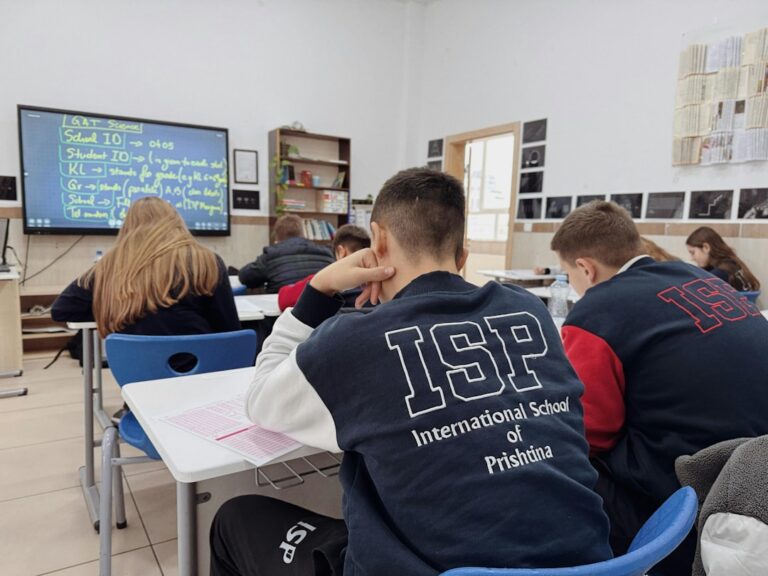
Online education has emerged as a transformative force in the landscape of learning, particularly in rural areas where traditional educational resources may be limited. The advent of the internet and digital technologies has opened up new avenues for students who previously faced geographical and infrastructural barriers to quality education. In rural communities, where schools may be few and far between, online education offers a viable alternative, enabling students to access a broader range of courses and learning materials.
This shift not only democratizes education but also empowers students to pursue their academic goals without the constraints imposed by their physical location. The COVID-19 pandemic further accelerated the adoption of online learning, highlighting both its potential and its pitfalls. As schools transitioned to remote learning, rural students were thrust into a digital classroom environment that was often ill-equipped to meet their needs.
While some students thrived in this new format, others struggled with the transition, revealing significant disparities in access and support. Understanding the unique challenges faced by rural students in online education is crucial for developing effective strategies that can enhance their learning experiences and outcomes.
Challenges Faced by Rural Students in Online Education
Rural students encounter a myriad of challenges when engaging with online education, many of which stem from systemic issues related to geography, economics, and infrastructure. One of the most pressing challenges is the lack of reliable internet connectivity. In many rural areas, high-speed internet is either unavailable or prohibitively expensive, creating a digital divide that hampers students’ ability to participate fully in online courses.
This lack of connectivity can lead to frustration and disengagement, as students struggle to access course materials, participate in live discussions, or submit assignments on time. In addition to connectivity issues, rural students often face a lack of educational resources that are readily available to their urban counterparts. This includes not only access to technology such as computers and tablets but also the availability of educational support services like tutoring and counseling.
Many rural schools operate with limited budgets and staff, which can result in fewer resources being allocated for online learning initiatives. Consequently, students may find themselves navigating complex subjects without adequate guidance or support, leading to feelings of isolation and discouragement.
Access to Technology and Internet Connectivity

Access to technology is a fundamental requirement for successful online education, yet it remains a significant barrier for many rural students. While urban areas typically enjoy robust technological infrastructure, rural regions often lag behind. According to the Federal Communications Commission (FCC), approximately 14 million Americans lack access to high-speed internet, with a disproportionate number residing in rural communities.
This digital divide not only affects students’ ability to engage with online coursework but also limits their exposure to essential digital literacy skills that are increasingly vital in today’s job market. Moreover, the devices used for online learning can also pose challenges. Many families in rural areas may not have the financial means to purchase laptops or tablets, which can hinder students’ ability to participate in virtual classrooms effectively.
Schools may attempt to bridge this gap by providing devices or loaning equipment; however, logistical issues such as transportation and maintenance can complicate these efforts. The disparity in access to technology creates an uneven playing field where some students can thrive while others struggle to keep up.
Lack of Support and Resources for Rural Students
| Issue | Impact | Statistics |
|---|---|---|
| Lack of access to advanced courses | Limiting educational opportunities | Only 29% of rural high schools offer advanced placement courses |
| Insufficient funding for technology | Reduced digital literacy and access to online resources | 40% of rural students lack access to high-speed internet |
| Shortage of qualified teachers | Lower quality of education | Rural schools are 3 times more likely to have difficulty hiring qualified teachers |
Beyond technological barriers, rural students often experience a lack of support systems that are crucial for academic success. In urban settings, students typically have access to a variety of resources such as academic advisors, mental health counselors, and extracurricular programs that foster engagement and personal development. In contrast, rural schools may have limited staff and resources dedicated to supporting students’ diverse needs.
This lack of support can be particularly detrimental for those who require additional assistance or guidance in navigating the complexities of online education. Furthermore, the isolation experienced by many rural students can exacerbate feelings of loneliness and disconnection from their peers and educators. The absence of face-to-face interactions can lead to a diminished sense of community and belonging, which are essential components of a positive educational experience.
Without regular opportunities for social engagement or mentorship, students may struggle to stay motivated and engaged with their studies. This emotional and psychological toll can significantly impact their academic performance and overall well-being.
Strategies for Overcoming Online Education Barriers
To address the challenges faced by rural students in online education, several strategies can be implemented at various levels—individual, institutional, and governmental. One effective approach is the establishment of community-based learning hubs that provide access to technology and internet connectivity. These hubs can serve as safe spaces where students can gather to study, collaborate on projects, and receive tutoring or mentorship from local educators or volunteers.
By fostering a sense of community and providing essential resources, these hubs can help mitigate feelings of isolation while enhancing academic engagement. Additionally, schools and educational institutions can invest in training programs for teachers that focus on effective online teaching methodologies tailored for rural contexts. Professional development opportunities that emphasize digital pedagogy can equip educators with the skills needed to create engaging online learning environments.
Furthermore, incorporating culturally relevant content into online curricula can help make learning more relatable and meaningful for rural students, thereby increasing their motivation and interest in their studies.
Success Stories of Rural Students in Online Education

Virtual Science Fair: A Testament to Innovation
A group of high school students from a small town in Montana leveraged online platforms to create a virtual science fair that attracted participants from across the state. By collaborating with local businesses for sponsorships and utilizing social media for outreach, these students not only showcased their scientific projects but also fostered connections with peers they would not have met otherwise.
Pursuing Passion through Online Courses
Another inspiring example comes from a young woman in rural Kentucky who utilized online courses to pursue her passion for graphic design. With limited access to specialized programs at her local school, she turned to online platforms that offered comprehensive design courses. Through her dedication and hard work, she built an impressive portfolio that ultimately led her to secure an internship with a prominent design firm.
Empowering Rural Students to Pursue Their Dreams
Her story exemplifies how online education can empower rural students to pursue their dreams despite geographical limitations.
The Role of Community and Government in Supporting Rural Students
The role of community organizations and government initiatives is pivotal in supporting rural students’ access to online education. Local governments can play an essential role by investing in infrastructure improvements that enhance internet connectivity across rural areas. Initiatives such as expanding broadband access through public-private partnerships can significantly reduce the digital divide and ensure that all students have equal opportunities for online learning.
Community organizations can also contribute by providing resources such as after-school programs that focus on digital literacy and academic support. Collaborations between schools, libraries, and local businesses can create a network of support that addresses the unique needs of rural students. By fostering partnerships that prioritize education and community engagement, stakeholders can work together to create an environment where rural students can thrive academically.
Recommendations for Improving Online Education for Rural Students
To enhance online education for rural students effectively, several recommendations should be considered by policymakers, educators, and community leaders alike. First and foremost, increasing investment in broadband infrastructure is critical; ensuring that all rural households have access to high-speed internet should be a top priority. This could involve leveraging federal funding programs aimed at expanding broadband access in underserved areas.
Additionally, developing comprehensive training programs for educators focused on online teaching strategies tailored for rural contexts is essential. These programs should emphasize not only technical skills but also culturally responsive teaching practices that resonate with rural students’ experiences. Furthermore, creating mentorship programs that connect rural students with professionals in their fields of interest can provide invaluable guidance and inspiration.
Lastly, fostering collaboration among schools, community organizations, and local businesses can create a robust support network for rural students engaged in online education. By pooling resources and expertise, these stakeholders can develop innovative solutions that address the unique challenges faced by rural learners while promoting academic success and personal growth.
FAQs
What are the challenges faced by rural students in accessing quality education online?
Rural students often face challenges such as limited access to high-speed internet, lack of necessary technology devices, and limited availability of online educational resources.
How are rural students overcoming the challenges of accessing quality education online?
Rural students are overcoming these challenges through initiatives such as community partnerships, mobile learning labs, and the use of satellite internet technology to improve internet access.
What are some examples of successful programs or initiatives that have improved online education access for rural students?
Examples of successful programs include the use of mobile hotspots to provide internet access, partnerships with local businesses to provide technology devices, and the development of online educational resources specifically tailored to rural students’ needs.
What role do government and educational institutions play in improving online education access for rural students?
Government and educational institutions play a crucial role in providing funding, infrastructure, and support for initiatives aimed at improving online education access for rural students. This includes investing in broadband infrastructure and providing grants for technology resources.



